Butterflies and Moths
Media
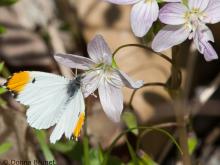
Species Types
Scientific Name
Anthocharis midea
Description
Falcate orangetip males are unmistakable with their small size, white coloration, and orange wingtips. Look for them in open woodlands in April.
Media
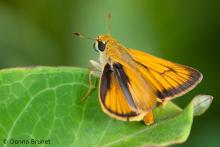
Species Types
Scientific Name
Anatrytone logan
Description
The undersides of the Delaware skipper's wings are solid orange. It's found statewide in a variety of habitats.
Media

Species Types
Scientific Name
Hylephila phyleus
Description
Fiery skippers have plain orange undersides scattered with a sprinkling of small dark spots. Males have flame-shaped orange patches on the hindwing upper surface.
Media

Species Types
Scientific Name
Pyrgus communis
Description
The white and black checkered pattern makes this a simple identification. The common checkered skipper is the only checkered skipper in Missouri.
Media
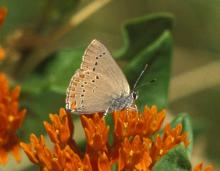
Species Types
Scientific Name
Satyrium titus (syn. Harkenclenus titus)
Description
The coral hairstreak is the only Missouri hairstreak lacking hindwing “tails” and without a blue spot on the outer hindwing edge.
Media
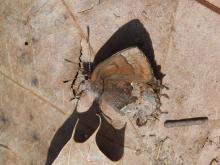
Species Types
Scientific Name
Callophrys henrici (formerly Incisalia henrici)
Description
Henry’s elfin is a small brown butterfly with splendid camouflage markings. It lives in and near open woodlands. The adults fly only in April and early May, when redbuds and wild plums are blooming.
Media
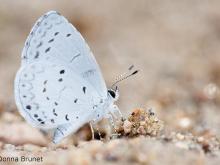
Species Types
Scientific Name
Celastrina neglecta
Description
Formerly considered the same species as the spring azure, the summer azure can be identified, in large part, by the season when you see it.
Media

Species Types
Scientific Name
Libytheana carinent
Description
Most of us identify butterflies by their color patterns, but you can ID the American snout by its long “nose.”
Media
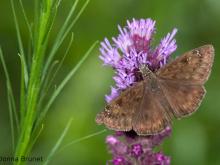
Species Types
Scientific Name
Erynnis horatius
Description
Look for Horace’s duskywing at flowers and mud puddles, in forests, and along roadsides.
Media
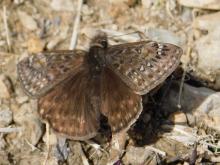
Species Types
Scientific Name
Erynnis juvenalis
Description
Juvenal’s duskywing is a spread-wing skipper that closely resembles Horace’s duskywing. Unlike Horace’s, it flies only in springtime and has two small telltale pale spots on the hindwing underside.
See Also


Media

Species Types
Scientific Name
About 1,500 species in North America north of Mexico
Description
Adult caddisflies are mothlike. Their larvae are aquatic and build portable, protective cases out of local materials, including grains of sand, bits of leaves and twigs, and other debris.
Media

Species Types
Scientific Name
Corydalus cornutus
Description
Adult eastern dobsonflies are huge and mothlike, with large wings and a weak, fluttery flight. The fiercely predaceous aquatic larvae, called hellgrammites, are well-known to anglers, who often use them as bait.
About Butterflies and Moths in Missouri
Butterflies, skippers, and moths belong to an insect order called the Lepidoptera — the "scale-winged" insects. These living jewels have tiny, overlapping scales that cover their wings like shingles. The scales, whether muted or colorful, seem dusty if they rub off on your fingers. Many butterflies and moths are associated with particular types of food plants, which their caterpillars must eat in order to survive.





















